–by Sharon Schroll
Q: Did you hear about the two bed bugs who met in the mattress?
A: They got married in the spring
–by Sharon Schroll
–by Jeff Whitworth — Field Crops
Much of the sorghum around northcentral Kansas is just starting to reach the flowering stage. This is the most susceptible stage for the attack of “headworms”. To visualize the potential of a “headworm” infestation in sorghum, or even a “podworm” infestation in soybeans, just remember all the armyworms/fall armyworms/corn earworms that have been chewing on alfalfa/brome/and lawns the past few weeks. These larvae are, or have been, pupating and the adult moths will be, if they are not already, flying around depositing eggs on susceptible plants. Remember, sorghum is vulnerable to “headworms” from flowering until soft dough. “Headworms” cause 5% loss/worm/head but the infestation needs to be detected as early as possible while the larvae are still small (see fig 1. Relatively young corn earworm larvae from sorghum head on 24 Aug). The larger the larvae the more grain they have damaged and will continue to damage until they pupate.
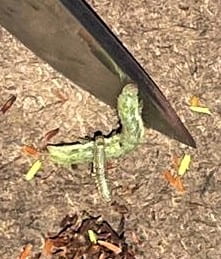
Figure 1. Young corn earworm larvae from sorghum (pic by Cody Wyckoff)
At the same time, sugarcane aphids are continuing to migrate into Kansas. Individual winged aphids are relatively common now, plus a few colonies. There are even a few colonies that are starting to cause concern (see fig 2. of a field in Geary County). Monitoring for “headworms” thus needs to continue in each field until the soft dough stage and for sugarcane aphids through the hard dough stage. For more information, regarding treatment thresholds/sampling/and products registered for the control of “headworms” or sugarcane aphids please refer to the 2021 KSU Sorghum Insect Guide.

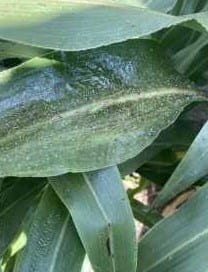
Figure 2. Sugarcane aphid colonies – photos provided by Mr. Chuck Otte, Geary County Extension.
by Raymond Cloyd—Horticultural Entomology
–by Jeff Whitworth — Field Crops
“Worms” are not the only pests feeding on crops right now! Grasshoppers (see fig 5) are especially numerous this year and will also continue to feed into the fall and continue to deposit eggs in the soil mainly in undisturbed areas adjacent to crop fields. (All pictures by Cody Wyckoff)
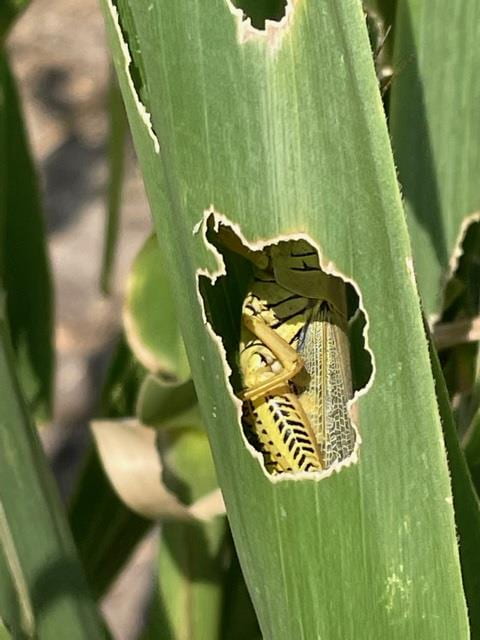
Figure 5: Grasshopper feeding in corn
–by Jeff Whitworth — Field Crops
“Worms” have been voraciously feeding throughout at least the eastern 2/3’s of Kansas for about the last 3 weeks. However, they have only recently gotten large enough to cause considerable damage and thus concern. The main problem in alfalfa, so far, seems to be a combination of fall armyworms (see fig 1), armyworms (see fig 2), and somewhat surprising, alfalfa caterpillars (see fig 3).
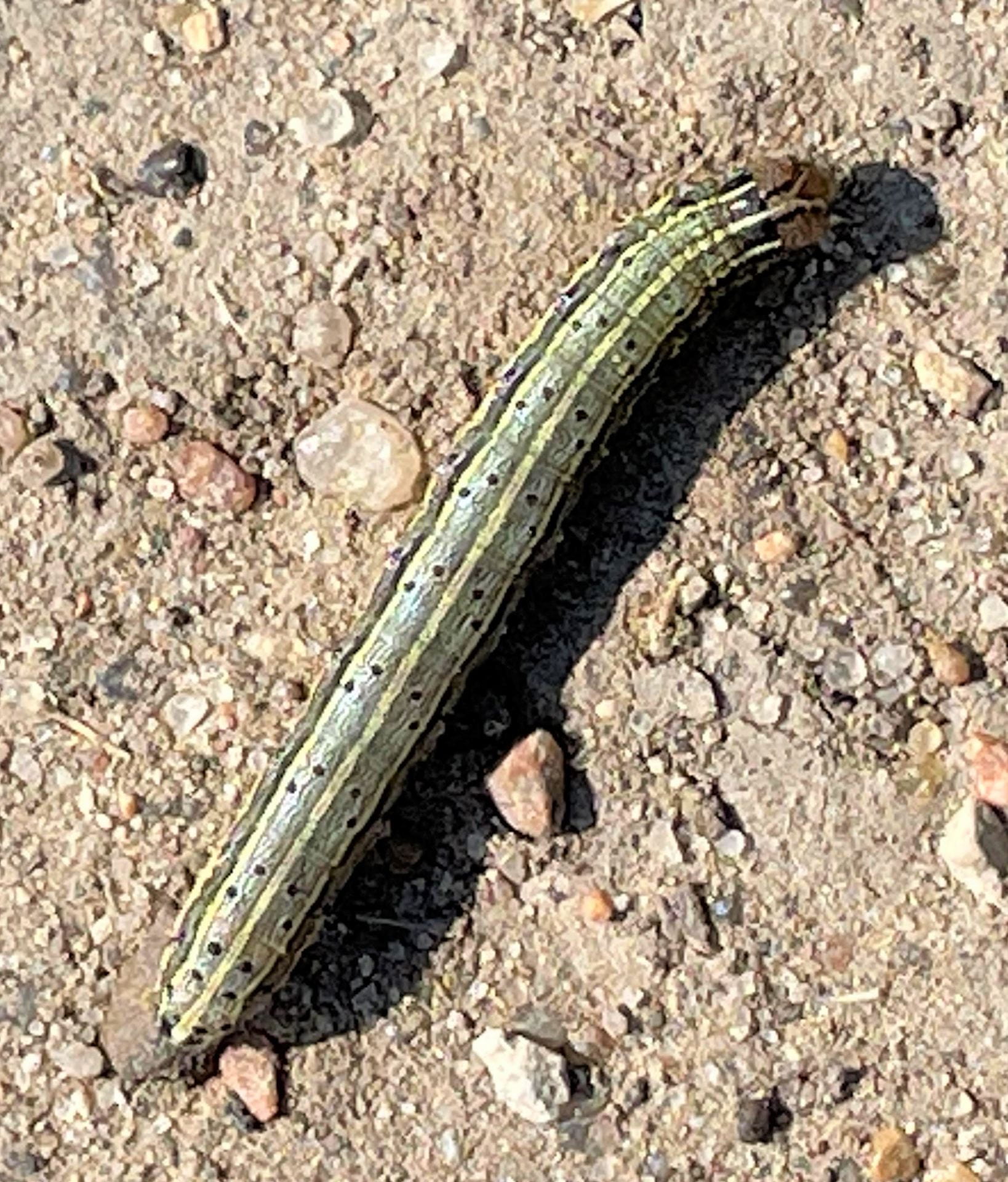
Figure 1: Fall armyworm
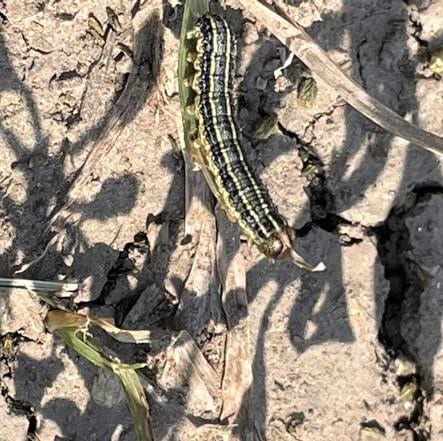
Figure 2: Armyworm

Figure 3: Alfalfa caterpillar
Alfalfa caterpillars are usually quite common in alfalfa and soybeans, however, not at the densities detected this year. Alfalfa caterpillars pupate then emerge as the common yellow (see fig 4) or white butterflies usually seen flying around alfalfa and soybean fields.

Figure 4: Adult alfalfa caterpillar
Regardless of which larval species, it is apparent that the majority of the larvae are relatively mature and thus will be/or are pupating soon. Pupation will probably take 4-5 days. Then the adults will emerge, mate and start depositing eggs. These eggs will hatch, and then in 4-7 days the new, but very small, larvae will start the feeding process all over again. Armyworms (fig 2) will attack mainly grasses, i.e. brome, late-planted sorghum, wheat, etc. Alfalfa caterpillars (fig 3) will mostly stay in alfalfa or soybeans, before they get too mature, and fall armyworms (see fig 1) may feed on just about any crop. However, sorghum should only be susceptible to “headworms” from flowering until soft dough. All three species may have at least one more generation, if not more, until a hard freeze puts a stop to them.